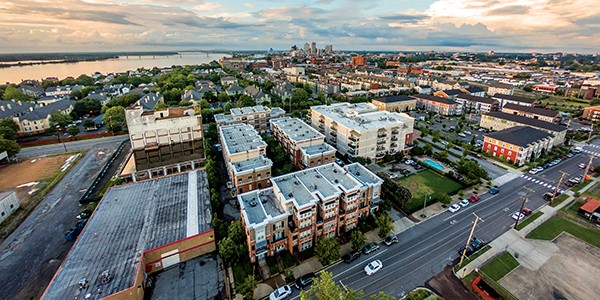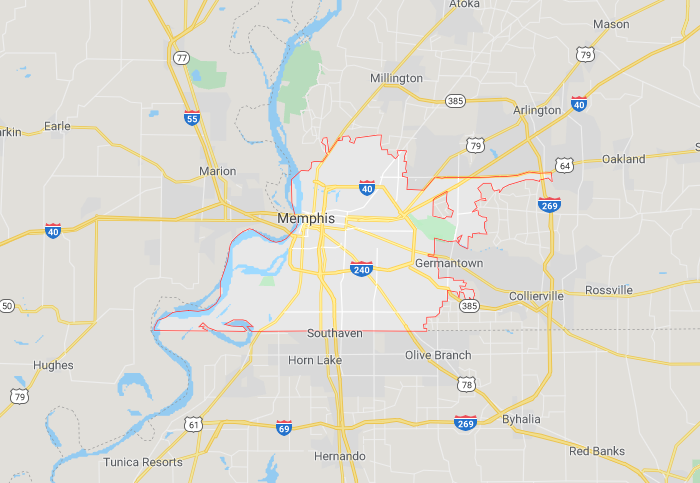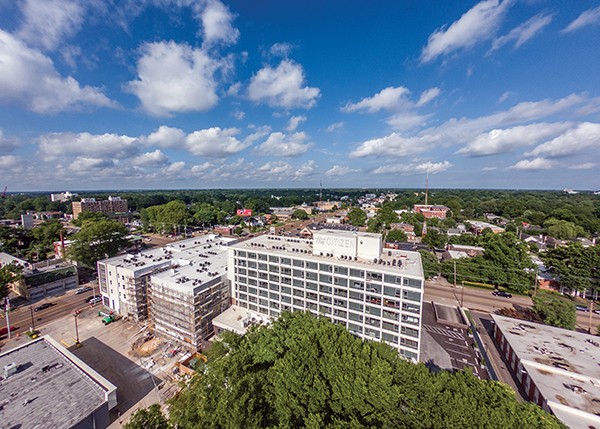
Memphis is red hot and nobody probably knows that better than Paul Young, director of the city’s Division of Housing and Community Development.
From his office, he has a view of nearly every development underway here and of those that haven’t yet officially entered the development pipeline.
From that view, he said he sees opportunity here not seen in decades.
“We’re seeing an increased interest in Downtown and Midtown like we haven’t seen in 40 years,” Young said Tuesday during the inaugural Memphis Housing Summit. “It feels like every week there’s a new investor or developer that calls our office or reaches out to the mayor’s office to express development opportunities.”
 Toby Sells
Toby Sells
HCD director Paul Young answers questions during a news conference last year.
From that view, he also sees “some very real housing challenges” — new and old — vexing those trying to navigate it, especially low-income families and people.
During the Housing Summit, Young listed six of the major problems facing housing in the city. Here’s that list with some insight from Young.
1. The low cost of housing in our community
“In some sub-markets in the city, the average home value can be less than $50,000. The banks have limited products to fund homebuyer loans below this.
[pullquote-1] “Even if it’s a rental unit and if the unit needs considerable work, it makes it very difficult to cash flow when the average rents in the area are so low.”
2. Low wages
Young said housing finances are tough for those in federally identified low-income bracket (for a family of four that’s roughly $24,000; for a single person, that is $12,000). For them Section 8 housing vouchers are “a must.”
He said 8,000 in Memphis now use such vouchers. Another 8,000 are on the waiting list to get one. This all creates a supply-and-demand gap.
“We looked at the affordable rental supply gap from 2016, we had 38,000 households that met the definition of extremely low income,” Young said. “But we only had 13,000 units that were available for them at a price point.
”So, what happens to the other families that are missing those units? That’s what leads to overcrowding in housing and some of the issues that you see there.”
Low wages also means less income to support higher rents in Memphis. Low wages won’t cut it if Memphis home prices go up, Young said.
3. The high predominance of single-family homes that are being used as rental units
Frayser has led the city in home sale transactions, Young said. But an expert told him that 85 percent of those sales were from one investor to another.

“This means that homeowners and the nonprofit developers in our community are competing with investor capital, mostly from out of state,” Young said. “So, our single-family homes are becoming long-term rental units, which changes the character of neighborhoods that are developed for homeownership.”
4. Poor-quality, aging housing stock
Many houses here are in disrepair. Many of their owners or landlords are either unable to afford the repairs or are unwilling to do them.
[pullquote-2]
“The end result is that occupants in the units are impacted with poor indoor air quality — asthma, lead poisoning from paint chips, and other health-related issues,” Young said. “Given these quality issues in the units, the families become more transient, which has an impact on educational outcomes, job opportunities, and transportation.
5. The city’s large geography
The city of Memphis is currently 325 square miles. Boston is 91 square miles with 670,000 people, Young said.
 Google Maps
Google Maps
City leaders annexed communities in decades past in an effort to increase tax coffers. City leaders now are trying to shrink that footprint with efforts to de-annex some of those areas to the tune of 15 or 20 square miles.
But the city’s large size puts a strain on transportation, which puts a strain on employment — getting to and from work.
The size also makes it hard, Young said, for developments in one part of town to spillover and pour developments in another.
6 Lack of quality middle-income housing alternatives in core, city neighborhoods
“Sometimes when people buy a house in some of the areas outside of the city, it’s not because they don’t want to be in the city is because they can’t find that product in a neighborhood that they would like to be in.
“Neighborhoods should be able to provide diverse housing types and options for families in all income brackets. They should enhance opportunities and access to jobs and services in close proximity to our homes.” 
The Citizen at McLean and Union